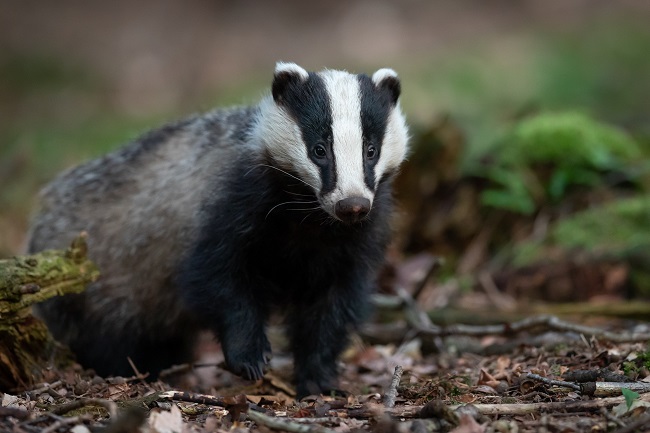
North America’s diverse ecosystems are home to a wide array of fascinating wildlife, each playing a unique role in maintaining the delicate balance of nature. Among these remarkable creatures, the badger stands out as a resilient and skilled species. With its storied history and important ecological role, the badger has left an indelible mark on the North American landscape.
The badger (Taxidea taxus) is native to North America and has a rich history that spans thousands of years. Indigenous cultures across the continent have revered this remarkable animal for its tenacity, strength, and hunting prowess. Native American tribes considered the badger a symbol of protection and relied on its power to ward off evil spirits.
The badger’s presence in North America predates human civilization, with fossil records dating back to the Pleistocene epoch. It has adapted and thrived in various habitats, including grasslands, prairies, deserts, and forests, earning a reputation as an adaptable and formidable predator.
Physical Characteristics and Behavior
The badger’s appearance is distinct, characterized by its stocky build, short legs, and powerful front claws perfectly adapted for digging. They possess a broad head, sharp teeth, and distinctive facial markings, with a white stripe extending from the nose to the back of the head.
Badgers are primarily solitary animals, although they may form loose family groups. They are most active during the night, using their excellent digging skills to excavate burrows known as setts. These elaborate underground homes serve as shelter, nesting areas, and storage for their food supply.
The Role of the Badger in the Ecosystem
The badger’s influence on North America’s ecosystems is profound and multifaceted. As opportunistic omnivores, badgers maintain a balanced diet, feeding on a variety of prey, including rodents, rabbits, reptiles, amphibians, insects, and fruits. By controlling rodent populations, badgers help regulate the delicate balance of local ecosystems, preventing overpopulation that can lead to crop damage and the spread of disease.
Furthermore, the badger’s digging activities significantly impact the landscape. The extensive burrow systems they create provide shelter for a diverse range of other animals, including burrowing owls, rabbits, snakes, and invertebrates. These underground networks also improve soil aeration and water infiltration, benefiting plant growth and supporting a healthy ecosystem.
Conservation Challenges and Efforts
Despite their ecological importance, badger populations in North America face several challenges that threaten their survival. Habitat loss due to urbanization, agriculture, and infrastructure development has fragmented their range, limiting their access to resources, and hindering their movement. Additionally, badgers are sometimes perceived as pests or threats to livestock, leading to human-wildlife conflicts.
8 Fun Facts About the North American Badger
Fierce and Fearless
North American badgers are known for their bold and fearless nature. Despite their relatively small size, they are renowned for their ferocity when defending themselves or their territory. They will readily confront larger predators such as coyotes or even face off against humans if provoked.
Incredible Digging Skills
Badgers are exceptional diggers and can excavate burrows with impressive speed and efficiency. They use their long, sturdy claws to dig through soil, creating extensive underground tunnels and chambers. These burrows can be quite elaborate, often comprising multiple entrances and interconnected tunnels.
Nighttime Hunters
Badgers are primarily nocturnal animals, meaning they are most active during the night. Their excellent night vision and acute sense of smell help them locate and capture their prey, which primarily consists of small mammals like ground squirrels, gophers, prairie dogs, and rabbits.
A Coat of Many Colors
North American badgers have a unique and striking coat pattern. They typically have a grizzled or mottled appearance, with a mix of black, white, gray, and brown fur. This coloration helps them blend into their surroundings, providing camouflage while they hunt or hide in their burrows.
Speedy Runners
Although badgers are not built for speed, they are surprisingly quick runners. When chasing down prey or evading predators, they can reach speeds of up to 30 miles per hour for short distances. Their short legs and low center of gravity enable them to move swiftly across open terrain.
Hibernate? Sort of But Not Really
While badgers do experience a period of reduced activity during the winter, they do not hibernate in the traditional sense. Instead, they enter a state called torpor, where their body temperature drops slightly, and they conserve energy by staying in their burrows for extended periods. However, they may emerge on milder winter days to hunt for food.
Scent Marking
Badgers have scent glands located near their tail, which they use to mark their territory. They release a pungent odor to communicate with other badgers and deter potential intruders. Scent marking plays a crucial role in establishing boundaries and avoiding conflicts between individuals.
Lifespan and Longevity
In the wild, North American badgers typically live for around 4 to 5 years. However, in captivity, they can live up to 14 years. Their relatively short lifespan is attributed to factors such as predation, disease, and encounters with vehicles.
Related Articles & Free Email Newsletter Sign Up
Bobcats Range from Southern Canada to Northern Mexico
Giant Salamanders are the Largest Amphibians in the World
The Once Nearly Extinct North American Beaver is Now Thriving


Comment here